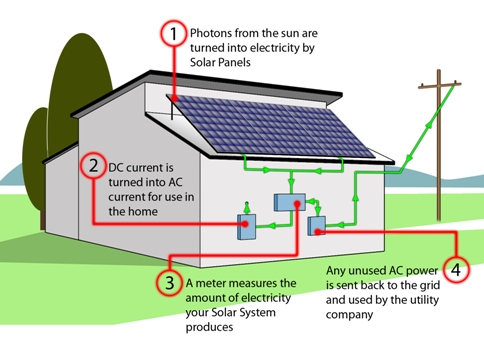Solar PV
How Solar Works
Solar electric systems are also commonly referred to as ‘solar photovoltaic’ or ‘solar PV’.
Photovoltaic technology on a small scale is probably familiar to most people in the UK.
It is used to power calculators, road signs, toys and phone chargers.
Taking light from the sun, it uses it to run the appliance.
Solar panels for electricity work on the same principle, just at a larger scale.
Sunlight is all you need to get electricity from the panels.
Although more electricity is produced on sunny days, they also work on overcast days.

Photovoltaic solar systems use cells, consisting of one or two layers of semi-conducting material, to convert solar radiation into electricity.
The semi-conducting material is generally silicon, which is the second most abundant element on earth after oxygen.
Light shines on the cell creating an electric field across the layers.
This causes electrons to flow creating electricity.
On its own each cell only creates a tiny bit of electricity, but connected together to form panels,
which are linked together to form a system, they create useful amounts of electricity.
which are linked together to form a system, they create useful amounts of electricity.
Panels are mounted on the roof or on a frame.
An inverter converts the direct current (DC) to alternating current (AC – or mains equivalent) electricity which is suitable for running appliances.
Grid connected systems can export electricity they don’t use to the grid, and import it from the grid when there is not enough sunlight.

